Search Images
Browse Content (p. 1083)
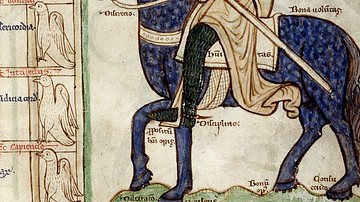
Image
Knight Battling the Seven Sins
A 13th century CE illustration of a knight about to battle the Seven Deadly Sins. From the Summa Vitiorum or "Treatise on the Vices" by William Peraldus.
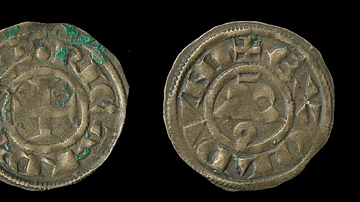
Image
Coin of Richard Lionheart
Official coin of King Richard I Lionheart (reigned 1189-1199 CE), struck in 1195 CE in Issoudun (formerly Exoldunum). The obverse is inscribed RICARD'REX ("KING RICHARD"). The reverse reverse is inscribed EXOLDUNI ("FROM ISSOUDUN"). (British...
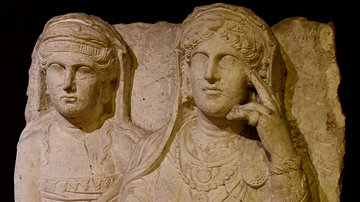
Image
Funerary Relief from Palmyra of a Woman and Daughter
This relief depicts an older woman with her daughter. They are set in a line, represented frontally, stiff, and lifeless. Both of them wear turbans and headbands. At their temples, long strands of hair are combed back and tucked into the...
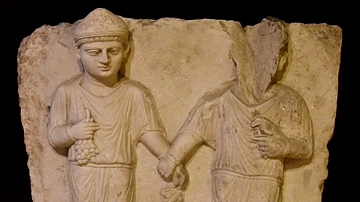
Image
Funerary Stele of Two Boys from Palmyra
The two young boys were represented frontally and are of a similar height. They wear the same type of clothes. The boy on the left side holds a bunch of grapes in each hand. The boy on the right grasps the left wrist of the right boy and...
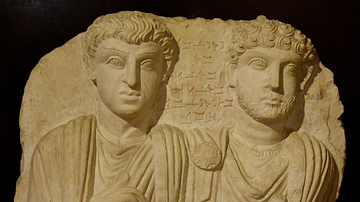
Image
Funerary Relief from Palmyra of a Man and his Son
The inscription on this funerary relief says that the two figures are "Yedi Bel" and his son "Zabde'atach". Limestone. Roman Period, 200-273 CE. From Palmyra, in modern-day Syria. (Museum of Archaeology, Istanbul, Turkey).
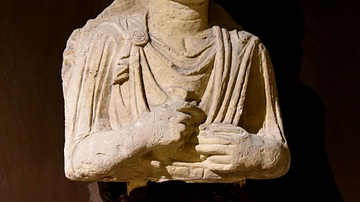
Image
Palmyrene Funerary Relief Bust of a Priest
The overall depiction of the man is Palmyrene but the provenance of excavation is unknown. Roman Period, first to second century CE. (Museum of Archaeology, Istanbul, Turkey).
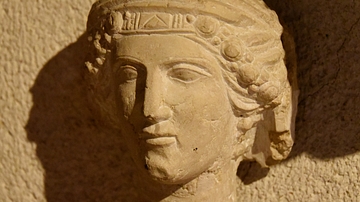
Image
Head of a Woman from Palmyra
This limestone head of an unidentified woman dates to the Roman Period, second to third century CE. From Palmyra, in modern-day Syria. (Museum of Archaeology, Istanbul, Turkey).
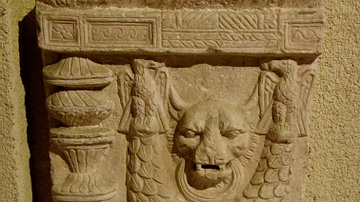
Image
Fragment of a Sarcophagus from Palmyra
This fragment is from a base of a sarcophagus. Roman Period. From Palmyra, in modern-day Syria. (Museum of Archaeology, Istanbul, Turkey).
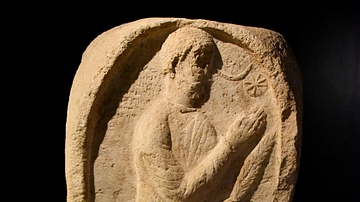
Image
Parthian Stele from Ashur
The Aramaic inscription says that this stele was erected in the 324th year of the Seleucid calendar (12-13 CE) by Sanashu's son, Re'n-tayar, the esteemed shepherd, for the goddess Sherua. Parthian, first century CE. From Ashur (Assur), Northern...
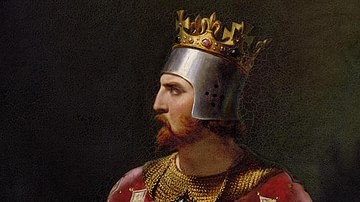
Image
Richard the Lionheart
A detail of a 19th century CE painting by Merry-Joseph Blondel of the English king Richard I of England, the 'Lionheart' (r. 1189-1199 CE). (Palace of Versailles, France)